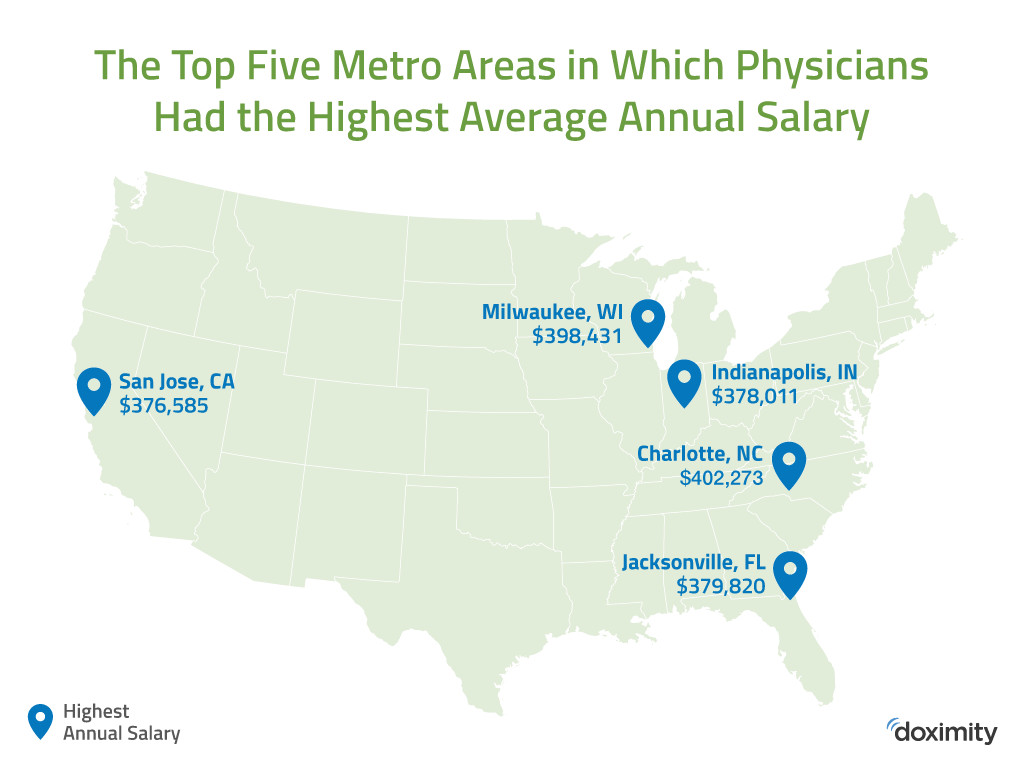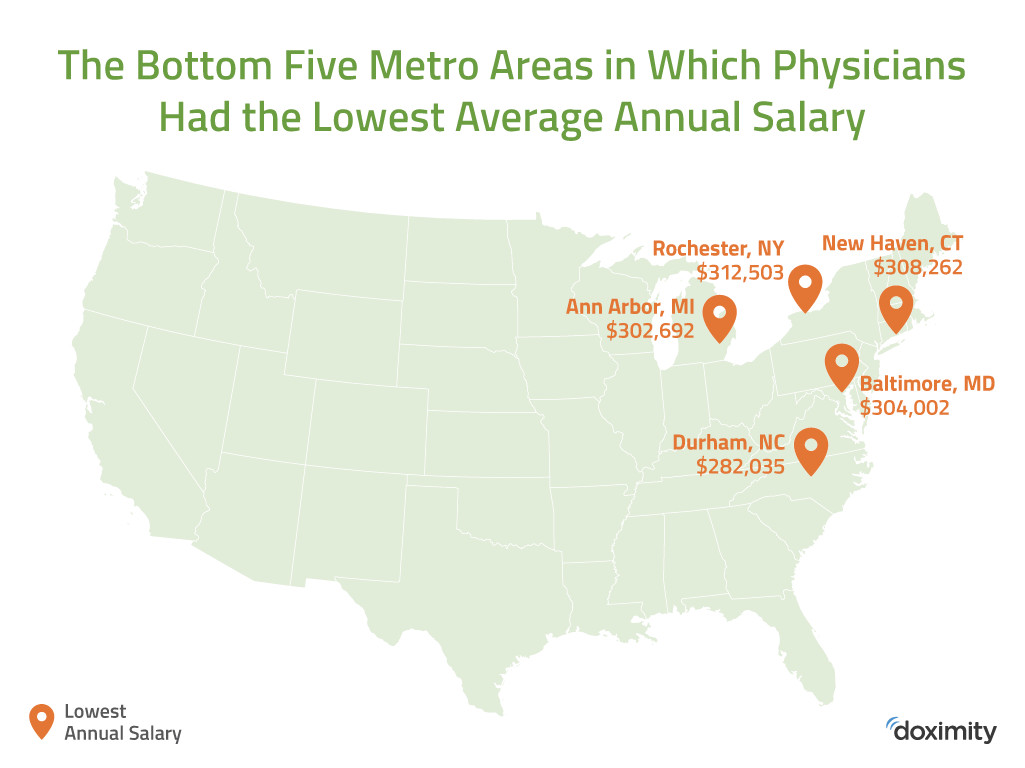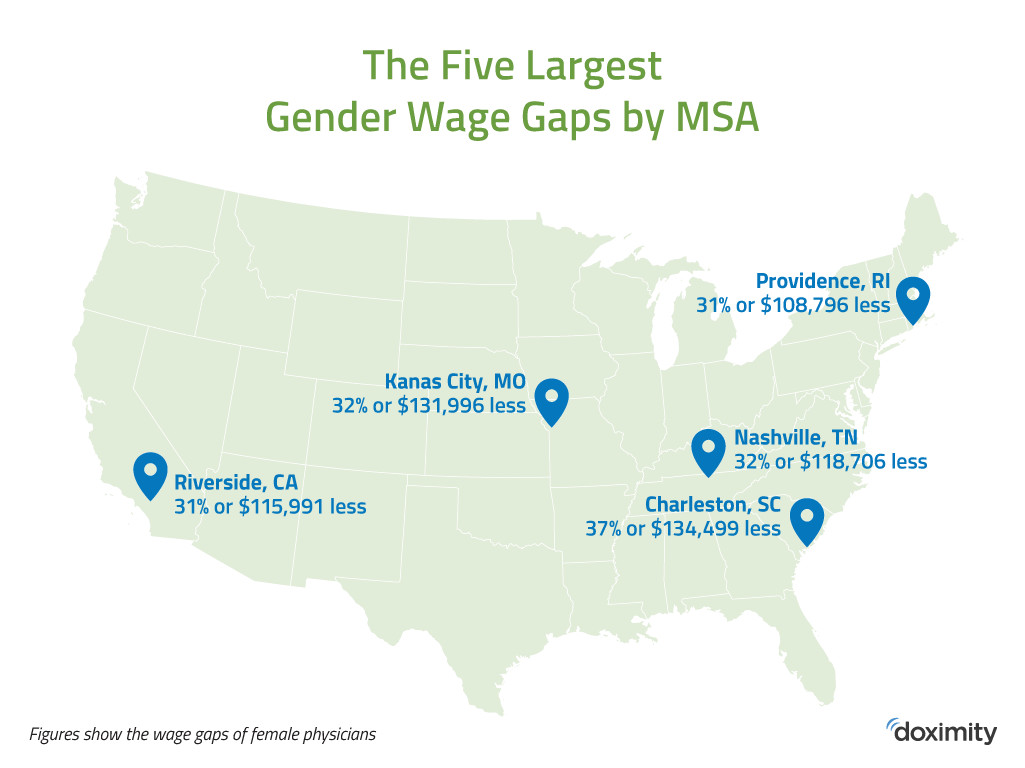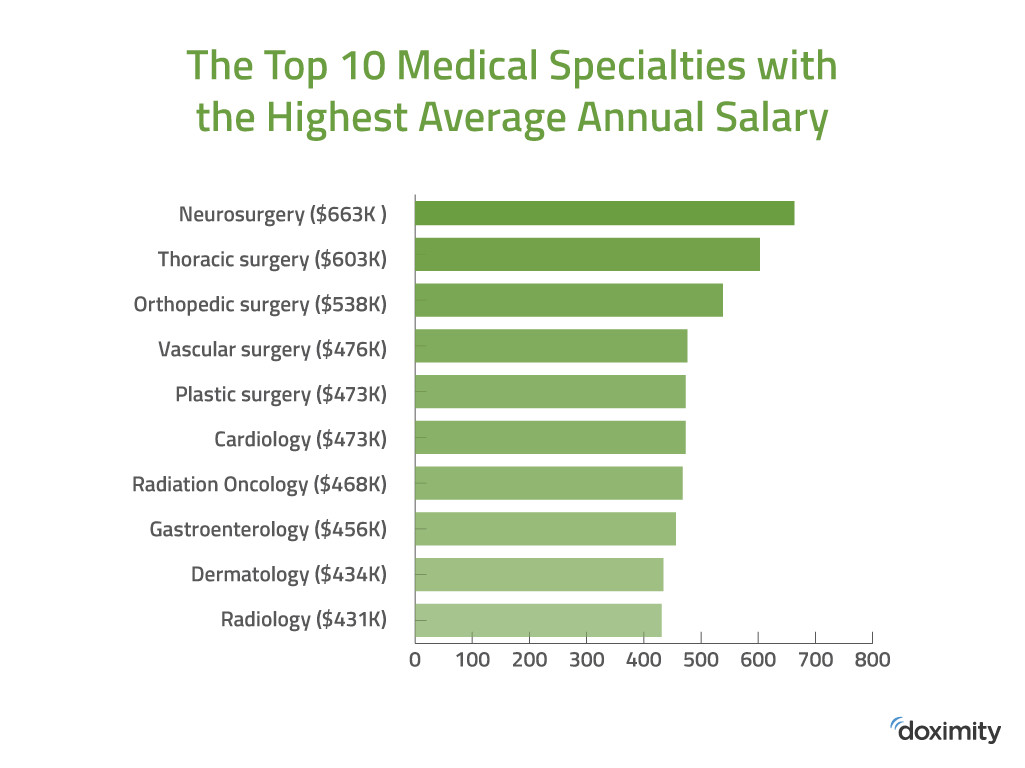Last week we announced our second annual physician compensation report, and the results were eye-opening. We’ve designed this to be one of the most complete views into compensation available, drawing on responses from more than 65,000 licensed U.S. doctors across the country. The study provides an overview into compensation trends, and for the first time, a glimpse into how physician compensation is changing year-over-year. The report details how physician pay compares across metropolitan areas, medical specialties, and gender.
Here is a snapshot and some highlights of this year’s findings. And if you’re a physician interested in a full copy of the report. Just click here to download a copy:
Charlotte Still Reigns, Milwaukee on the Rise
For the second straight year, Charlotte, N.C., was the metro area with the highest average annual compensation for physicians, offering $402,273. These numbers reflect all specialties averaged together.
The top 10 metro areas in which physicians had the highest average annual salary in 2017 are:
- Charlotte, N.C. ($402,273)
- Milwaukee ($398,431)
- Jacksonville, Fla. ($379,820)
- Indianapolis ($378,011)
- San Jose, Calif. ($376,585)

The 10 metro areas in which physicians had the lowest average annual salary in 2017 are:
- Durham, N.C. ($282,035)
- Ann Arbor, Mich. ($302,692)
- Baltimore ($304,002)
- New Haven, Conn. ($308,262)
- Rochester, N.Y. ($312,503)

Physician Gender Wage Gap Widens
Unfortunately, we found that the national gender wage gap got slightly larger within the last year. In 2017, female doctors earned 27.7 percent less ($105,000) than their male counterparts, compared to 2016 when female doctors earned or 26.5 percent ($91,284 ) less. There was also no medical specialty found in which female physicians earned more than male physicians.
The five largest gender wage gaps by MSA in 2017 are:
- Charleston, S.C. (female physicians earn 37 percent or $134,499 less)
- Kansas City, Mo. (32 percent or $131,996 less)
- Nashville, Tenn. (32 percent or $118,706 less)
- Providence, R.I. (31 percent or $108,796 less)
- Riverside, Calif. (31 percent or $115,991 less)

Medical specialties with the largest gender wage gaps in 2017 are:
- Hematology (female physicians earn 20 percent or $78,753 less)
- Occupational medicine (20 percent or $59,174 less)
- Urology (20 percent or $84,799 less)
- Orthopedic surgery (19 percent or $101,291 less)
- Gastroenterology (19 percent or $86,447 less)
Physician Compensation by Medical Specialty
The top 10 medical specialties with the highest average annual salary in 2017 are:
- Neurosurgery ($663K )
- Thoracic surgery ($603K)
- Orthopedic surgery ($538K)
- Vascular surgery ($476K)
- Plastic surgery ($473K)
- Cardiology ($473K)
- Radiation Oncology ($468K)
- Gastroenterology ($456K)
- Dermatology ($434K)
- Radiology ($431K)

On the flip side, physicians working in pediatrics were among the lowest-paid in 2017. In fact, the four medical specialties with the lowest average annual compensation all dealt with pediatrics.
The 10 medical specialties with the lowest average annual salary in 2017 are:
- Pediatric infectious disease ($192K)
- Pediatric hematology and oncology ($209K)
- Pediatric endocrinology ($215K)
- Pediatrics ($222K)
- Preventive medicine ($232K)
- Medicine/Pediatrics ($232K)
- Family Medicine ($241K)
- Geriatrics ($245K)
- Medical Genetics ($247K)
- Pediatric Gastroenterology ($255K)
One last thing. Physicians can access the complete salary map here
